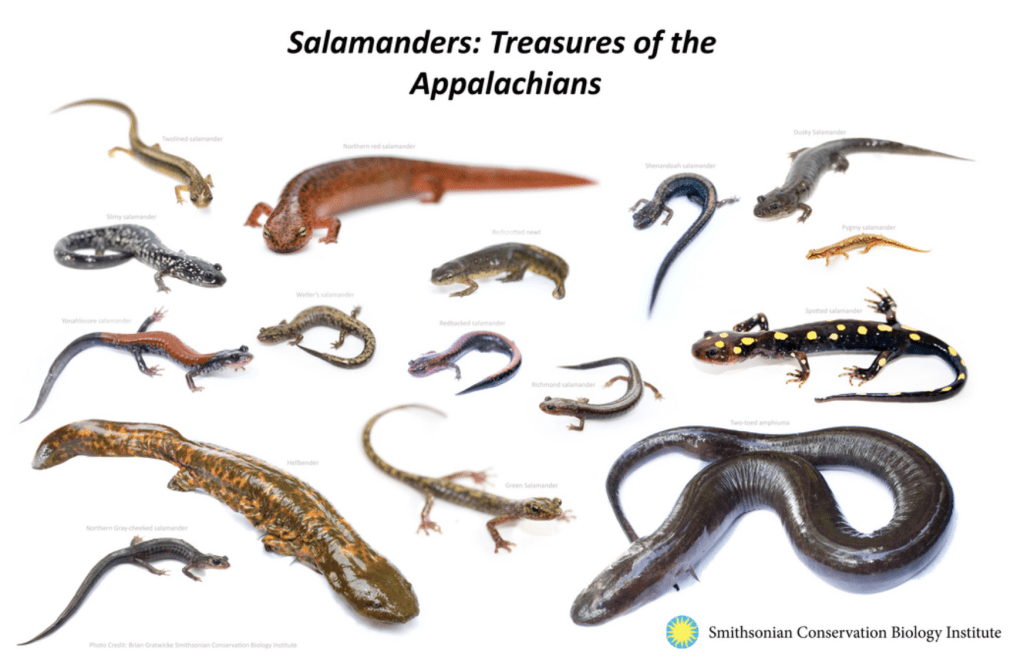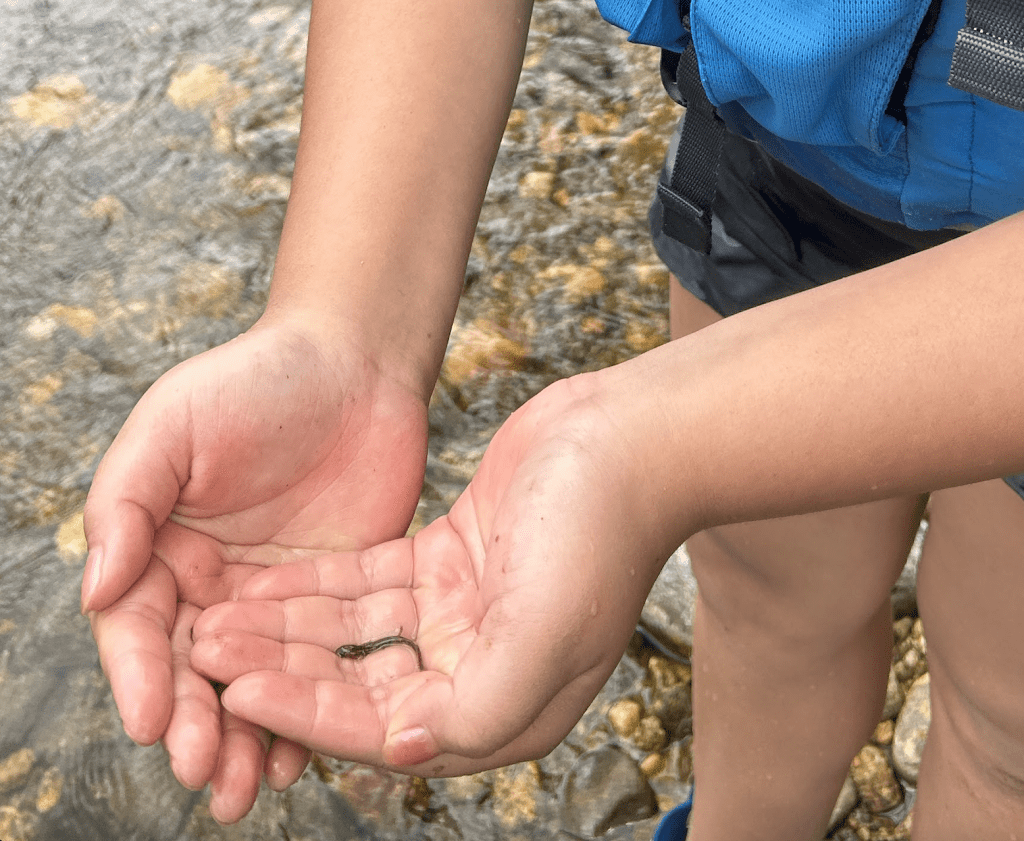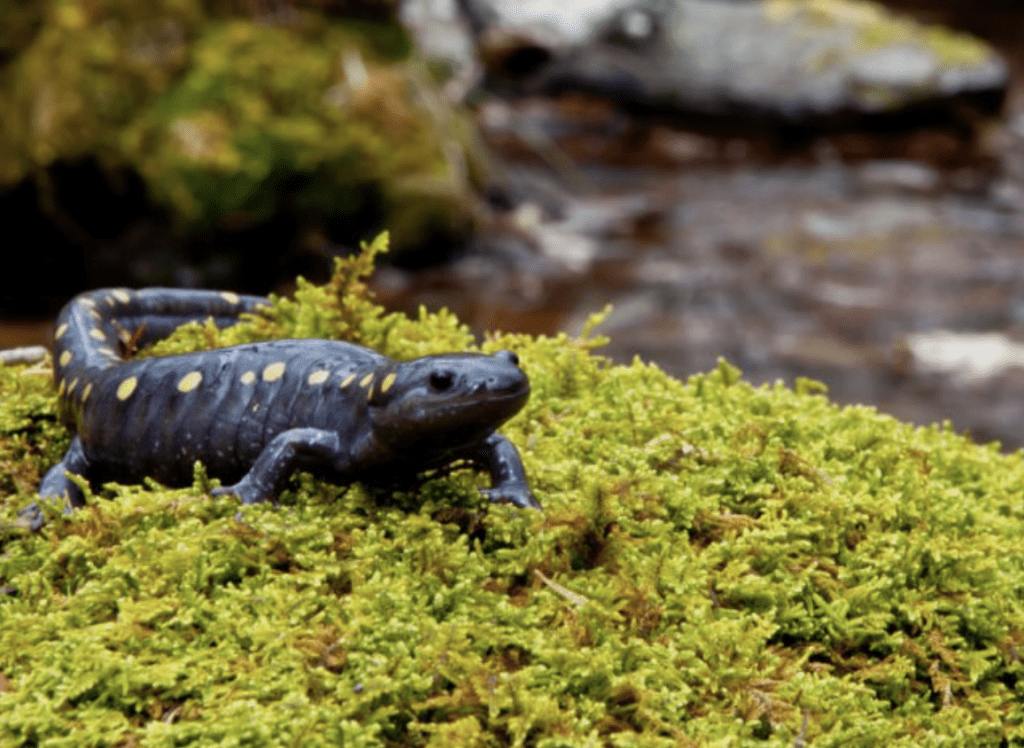The humble salamander is French Broad River Academy’s mascot. But why? What makes salamanders worthy of mascot status? Here are some salamander tidbits so that you’ll be in the know…
Fact 1: Salamander Capital of the World
According to the Highlands Biological Station, the Southern Appalachians is one of the most biologically diverse regions on earth, and also the salamander capital of the world. More than 35 species of salamander live in our mountains!
In the most recent ice age, thousands of plant and animal species retreated south to higher elevations to survive. When the ice receded, these diverse plant and animal communities remained in our mountains. This includes salamanders, who thrive in our cool, moist climate.

Fact 2: Salamanders Are Bio-Indicators

Salamanders are a good indicator species. Since they respirate through their skin, clean water is essential for their survival. They can be bio-indicators of water quality and overall watershed health.
The French Broad watershed and its stewardship is of vital importance to FBRA’s mission, and the salamander plays a role in identifying the watershed’s health.
Fact 3: It’s a Spotted Salamander, Not a Hellbender
Many people mistake our bespoke salamander to be a hellbender. Hellbenders, the largest salamander species and also known by the nicknames “snot otter” and “mud cat,” are certainly iconic.
But we claim spotted salamanders, a much smaller species that can be found in the leaf litter near bodies of water of eastern forests. They are quite elusive since they spend most of their time in their leafy hiding spots. Most of us at FBRA have never seen one in the wild. Learn more about spotted salamanders.

We at French Broad River Academy are proud to call ourselves Salamanders in honor of these ancient, fascinating creatures. When we are out paddling on the river or conducting field science projects or service in our watershed, we are caring stewards not only of our region but also of our flagship amphibian!
